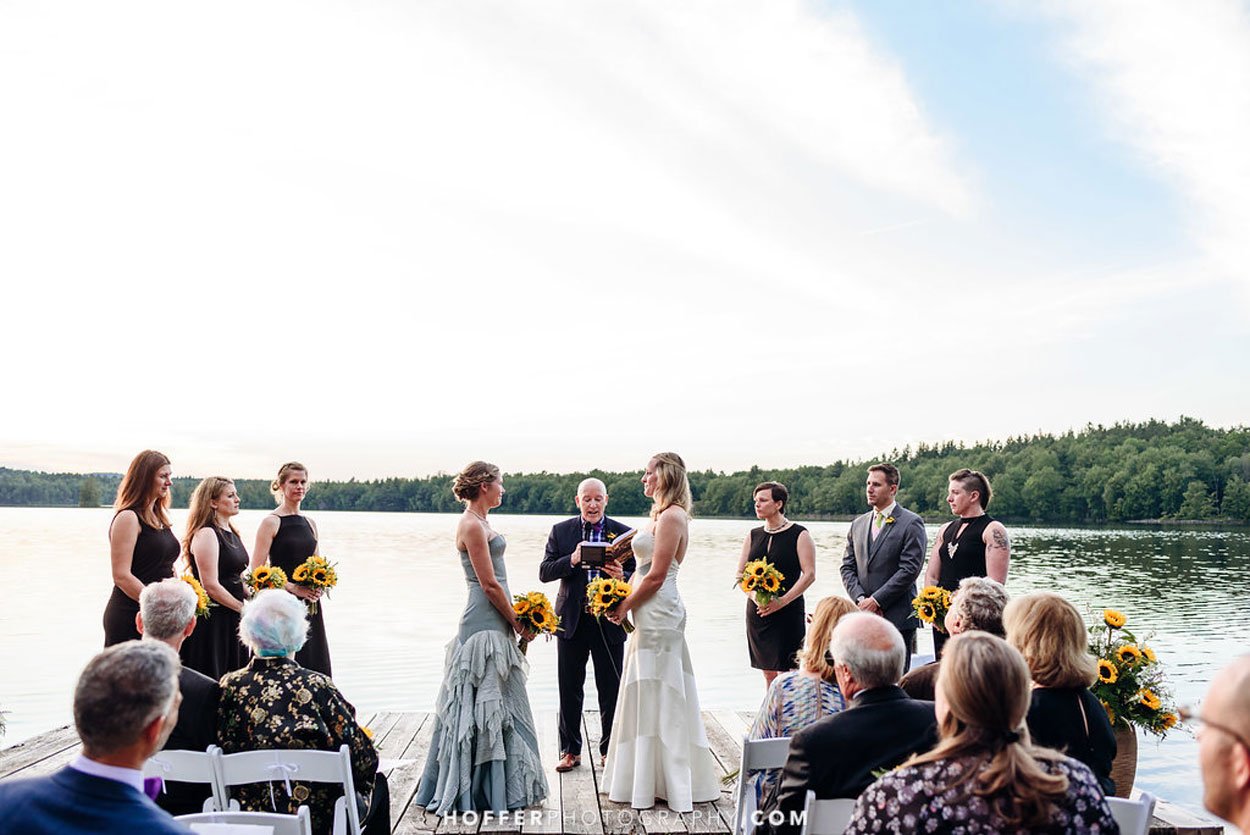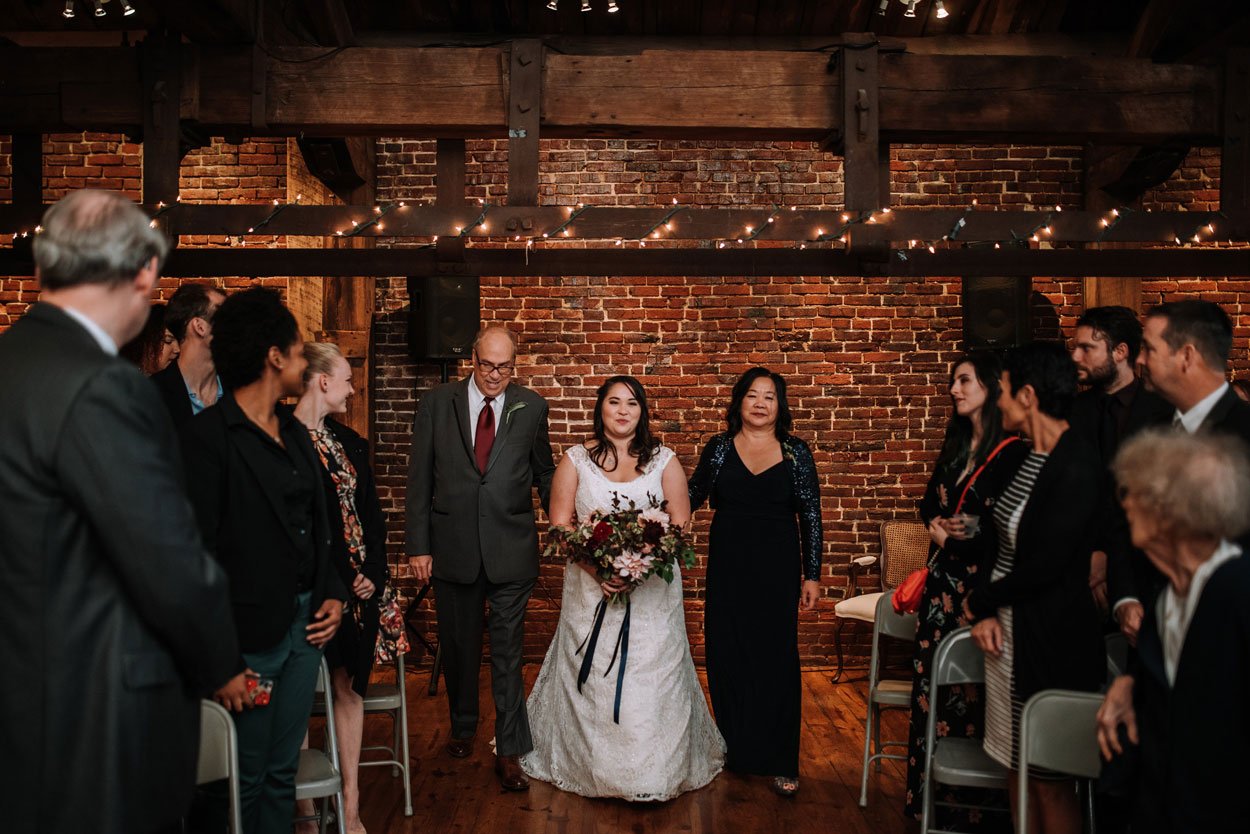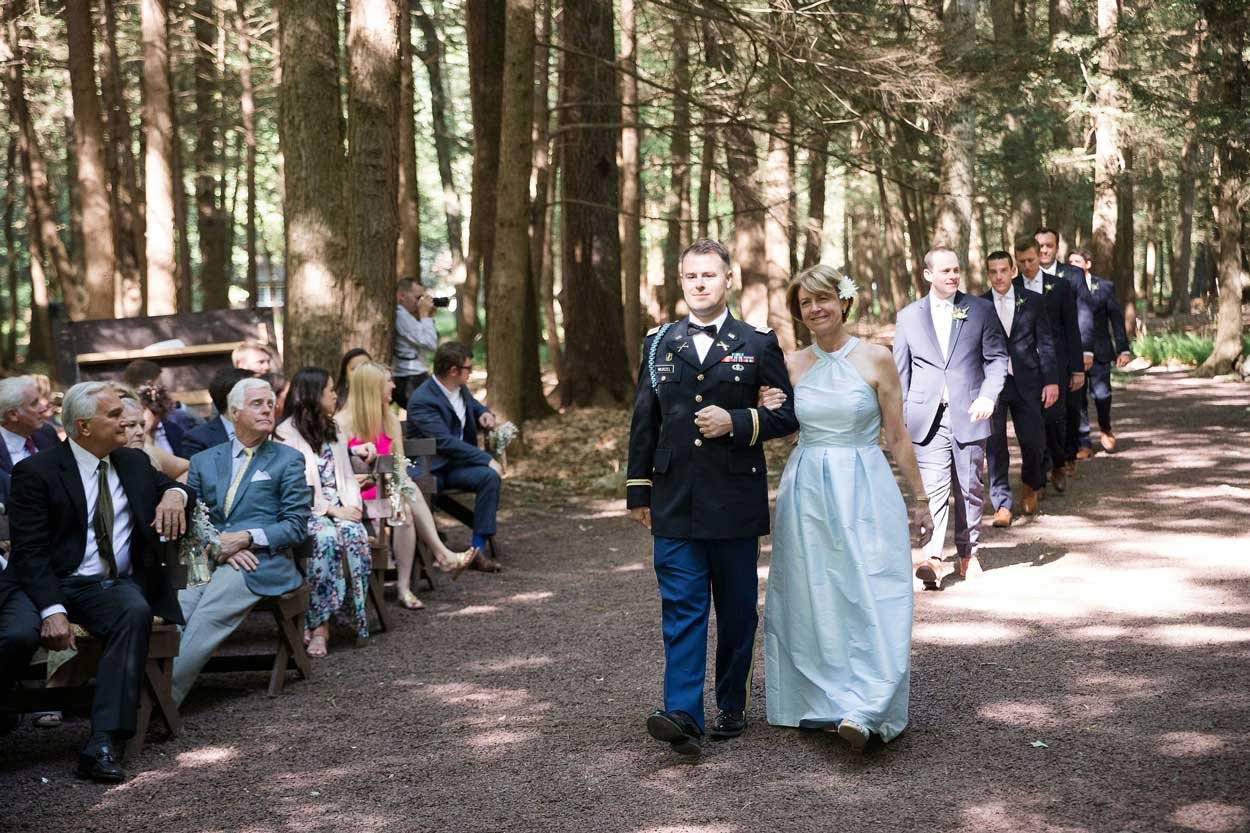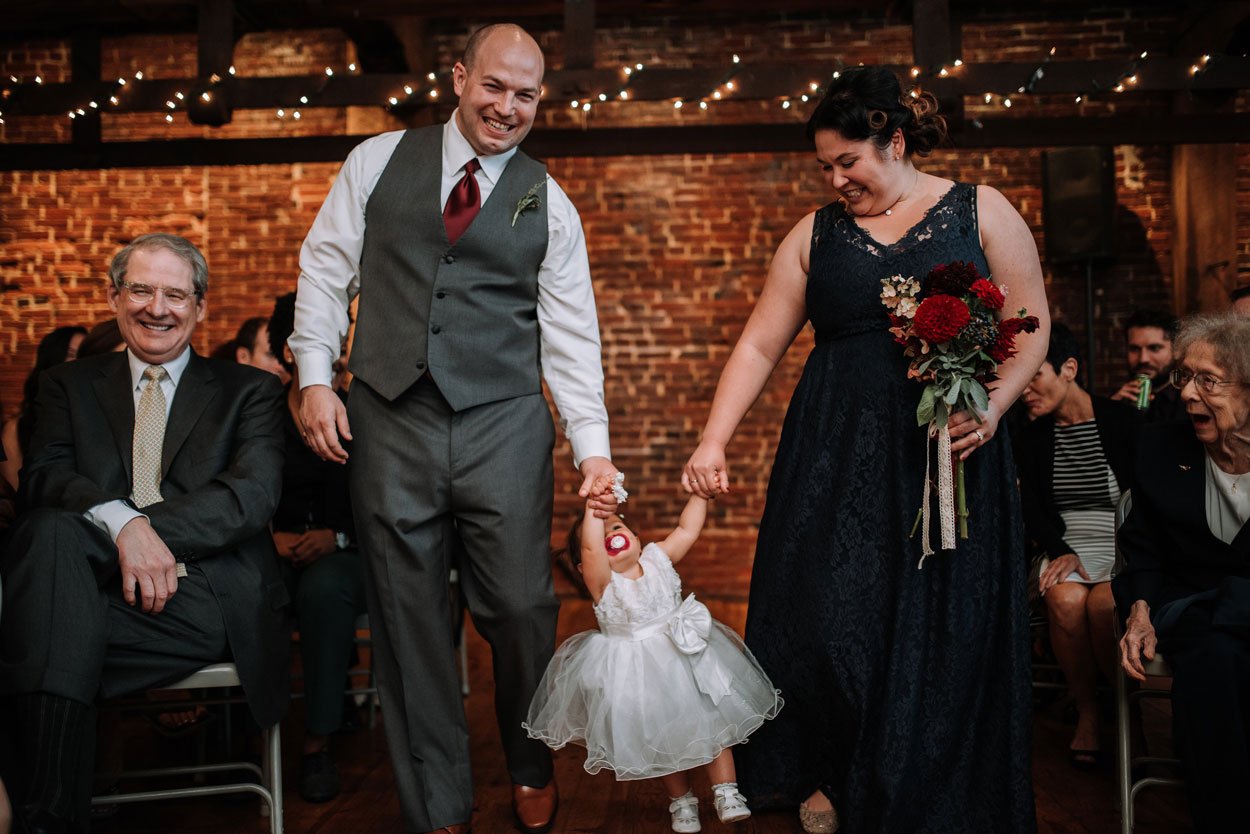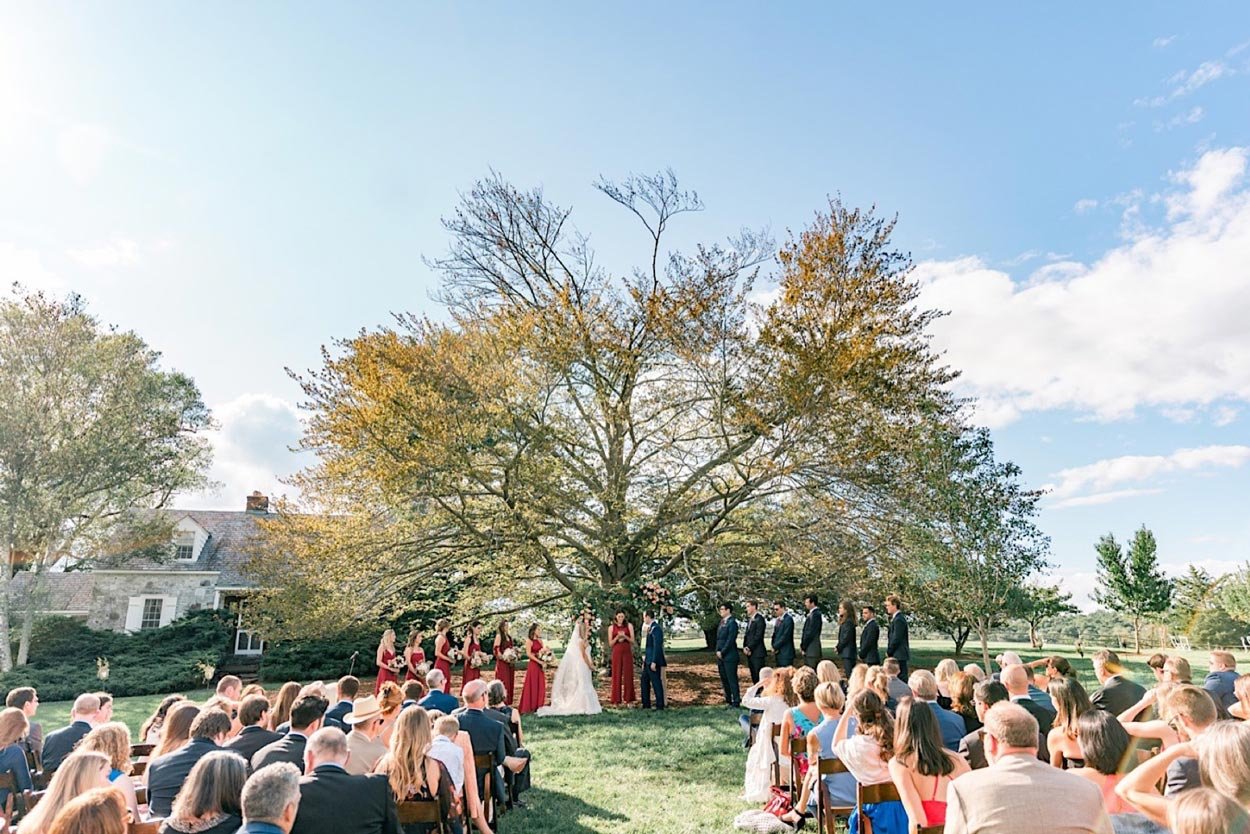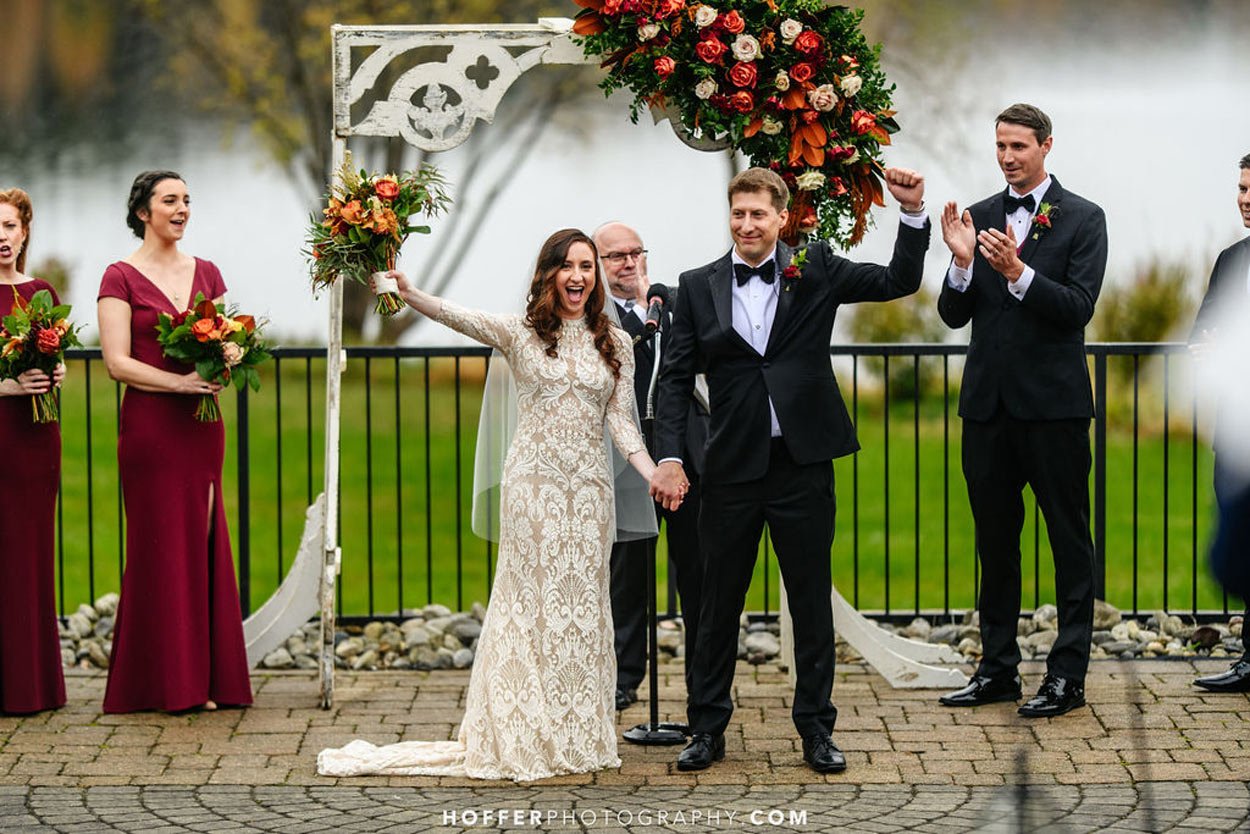7 Steps to Build Your Own Processional
SPOILER ALERT: THERE IS NO ONE “RIGHT” OR “WRONG” WAY FOR YOU AND YOUR VIPS TO ENTER FOR YOUR CEREMONY.
But building your own processional can be a confusing process if you’re tasked with creating it yourselves.
If you’re getting married in a church or incorporating a lot of religious or cultural elements to your ceremony, you may have less flexibility with customization. On the whole, I’ve found that you will need to follow their rules.
However, if you’re like most DPNAK couples, you’re here because you’re having a non-denominational wedding. You might be having a friend or family member officiate, or you might have hired a local officiant or celebrant to oversee your nuptials. But either way, you need to determine how you and your VIPs will officially enter for your wedding ceremony.
What is a processional?
The processional is the official entrance of you, as the couple getting married, and any VIPs like bridesmaids, groomsmen, parents, etc. It’s often done with music and marks the official start of the wedding ceremony.
FAMILIES AND WEDDING PARTIES COME IN ALL VARIATIONS AND GENDERS.
Before I go any further, it is always important to me to be inclusive of everyone. And I know that not everyone fits into the same boxes. The examples I use throughout this article are meant to give further clarity and are most definitely not an exhaustive list.
I encourage everyone to do what feels best to them and their “best people”.
Photo by Hoffer Photography of Kirsten and Amanda’s Poconos, PA wedding
Step 1: How do you, as the couple, want to enter your ceremony?
Let’s not think about any “order” for a moment. I want to start with the two most important people of your ceremony: you and your partner.
There are a variety of ways a couple can enter their ceremony.
Most commonly, each partner enters separately, escorted by a close family member or parent-figure.
If it feels better to walk into your ceremony together, absolutely do that.
However, if you’re opting NOT to see each other before the ceremony begins, you would likely not walk in together. Your entrances should also be spaced out to avoid accidentally seeing one another too early.
Photo by LuvLens of Ali and Ross’s Maas Building wedding
Step 2: If you, as the couple, are walking in separately, who (if anyone) will escort or walk in with you?
IF YOU’RE A BRIDE…
There is an old tradition of the Bride being walked down the aisle by her father. This goes back to the time when fathers “gave their daughters away” to their new husbands in return for land, property, or livestock.
While the roots of this tradition are outdated, it can still be a beautiful tradition and a nice moment between a daughter and her dad.
This is great for some, but that doesn’t always work for everyone.
So, ask yourself: who do you want to walk into your ceremony with?
Do you want to walk in with one, both, or none of your parents? What about a step-parent?
Or maybe you want to walk in with a sibling? Or just some other important person in your life?
And, it’s 100% OK if you prefer to walk in totally on your own.
Most commonly, the bride is the last person to enter the ceremony. So it’s important to consider who you want by your side in those final moments when emotions are high. (No bad energy is allowed in that moment)
IF YOU’RE A GROOM…
For grooms, you may want to walk in with one, both, or none of your parents. (If there’s a close relationship, I love when a Groom walks in with his mother and/or father)
You can also opt to enter with your Best Man and maybe your groomsmen.
Or, you’re also 100% allowed to enter solo.
IF YOU’RE A SAME-SEX COUPLE…
The same options still apply.
You can walk in with one parent, both parents, step-parents, siblings, wedding party attendants, an important person, or solo.
Do what feels right to you. Not what you think you “should” do based on the particular outfit you might be wearing.
Photo by Danielle Coons Photography of Marian and Brendon’s Poconos, PA wedding
Step 3: If any of your parents aren’t walking in with you, who are they walking in with?
If you want your parents to be part of the processional (which is most common), you’ll need to decide who they’ll walk in with, if they aren’t walking in with you.
This person can be a partner of theirs, a wedding party member, one of your siblings, or they can also walk down solo.
If you have any step-parents, you’ll also want to consider whether they should take part in the processional. This is usually a very personal decision and depends on the closeness and length of your relationship. When in doubt, I’ve found it’s better to talk it out to see what everyone is most comfortable with. And including always feels better than excluding.
If you’d like your grandparents to walk in the processional, they also typically have escorts similar to parents. However, in most cases, I recommend having your grandparents seated prior to the start of your ceremony for their comfort.
Step 4: Is your wedding party walking in paired together or solo?
If you have wedding party attendants (bridesmaids, groomsmen, bridesmen, groomsmaids, flower children, etc.), you want to decide if they are walking in paired together or individually?
When there are bridesmaids and groomsmen, two common options are:
The groomsmen enter together, often with the Best Man and/or Groom. Then the bridesmaids walk down the aisle individually and spaced apart.
The bridesmaids and groomsmen are paired up and walk down the aisle together.
If your wedding party numbers are uneven on each side, that is TOTALLY fine.
Some people can be paired, and others can be a trio. (Gender does not matter)
Also, being paired up does NOT need to mean holding hands or walking arm in arm. It can simply be two people walking down the aisle next to each other. (Again, gender doesn’t matter here either)
On the whole, do what makes sense and is comfortable for your wedding party.
Photo by LuvLens of Ali and Ross’s Maas Building wedding
Step 5: If you have small children in your wedding party, when do you want them to enter?
Depending on their age, your flower children and ring bearers may need some nudging and guidance. Any child in the wedding party that’s younger than five should have a parent or recognizable face at the back of the aisle with them until it’s their turn. (This should NOT be you)
Three common options for children are:
Entering after your parents, before the wedding party
Entering after most of the wedding party, and just BEFORE the Honorary Attendant (i.e. Maid of Honor)
Entering after all of the wedding party, just before the final partner walks down the aisle
For most younger children, I recommend they walk in after the parents so they aren’t waiting too long. The wedding party can also scoop them up, if need be.
There’s also nothing wrong with having the children walk in with one of their parents or an adult or teenage attendant. (As long as that person is a familiar face to them)
Photo by Josiah and Steph Photography of Katie and Max’s Bucks County Wedding
Step 6: What order do you want everyone to enter in?
Ok, now we get to think about the order of everyone.
If grandparents are taking part in the processional, they should go first. But as I mentioned above, I recommend having them seated prior to the start of the ceremony for their comfort.
Parents are typically the first to walk in, not including anyone that is walking with the last partner to enter. (For cishet couples, the groom’s parents enter first, then the bride’s.)
After the parents, the wedding party begins. At this point, if there’s a Groom and he hasn’t already walked in with his parents, he can enter with his Best Man and groomsmen.
The remainder of the wedding party will then enter with the children coming in first, last, or just before the honorary attendant.
The people standing FARTHEST from you at the altar enter FIRST with those standing CLOSEST to you (often an honorary attendant like Maid or Matron of Honor) entering LAST.
Finally, the remaining partner enters (or the Couple together).
An example of this processional order for a cishet couple could be:
Groom with Parents of the Groom
Mother of the Bride with Escort
Groomsmen enter together, lead by Best Man
Flower and ring children enter
Bridesmaids enter individually
Maid of Honor enters
Bride enters with Father of the Bride
An example of this processional order for a same-sex couple could be:
Parents enter together or with escorts (The order doesn’t matter, but if you want to get granular, the parents who are contributing more financially should enter second)
Wedding Party enters with honorary attendants entering last
Partner 1 enters with parent, VIP, or solo (This person can also enter before the wedding party if preferred)
Partner 2 enters with parent, VIP, or solo
Step 7: What music would you like played?
Now that you have your order, it’s time to pick some tunes.
For most processionals, 2-3 songs are best.
One is often used for the parents and wedding party entering, and one for the final partner(s) making their entrance.
If you have a very long aisle or a lot of people entering, a third song can be used just for the parents.
I do not recommend picking a different song for each person.
Final Tips
WHAT SIDE DO YOU STAND ON?
For most Christian and non-denominational ceremonies, the woman stands on the left. For Jewish ceremonies, the woman is the right.
If you’re making your own rules and have a better “side”, feel free to go with that.
DON’T FORGET ABOUT THE RECESSIONAL
The recessional is the exit immediately following the ceremony, starting with the couple who just got married. (WOOO!!)
This is often done in the reverse order of the processional and pairing is much more common.
To give you a template for your recessional:
Start with you as the couple exiting together
Then honorary attendants paired together
Then wedding party paired together (in twos or threes, as needed)
Then parents (in the opposite order of them walking in, so whoever entered last, exits first)
Grandparents, guests, etc.
For the recessional, I recommend picking 1-2 songs depending on the size of your space and your guest list.

